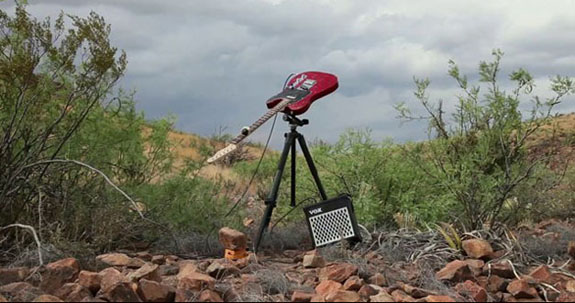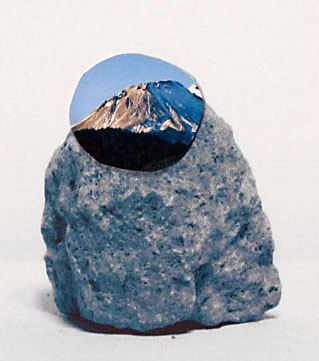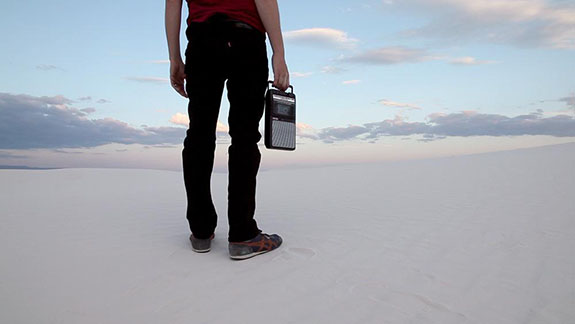 |
 |
These modified instruments all appear as functioning props in the performance, the predicament of always (as we are),which serves as the foundation of the show. Like Walker’s earlier works, this two-channel piece is a music video of sorts, set against arid desert landscapes, this time in White Sands, New Mexico. The video begins with an extended monologue by Walker with his back to the camera speaking into a tape recorder, his Romantic Rückenfigur character waxing philosophical to the surrounding silence, like a lover repeating failed arguments. Clearly frustrated, he traces lines in the white sand and fumbles for words, the awkwardness of his British-accented delivery functioning like Wes Anderson dialog: disarming us with his vulnerability, yet preparing us to accept whatever comes next.
 |